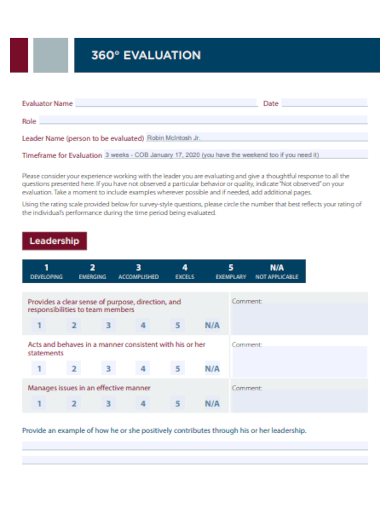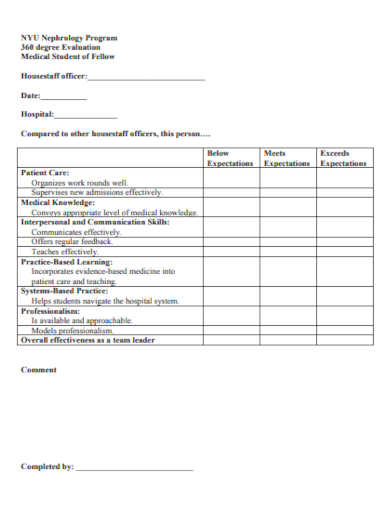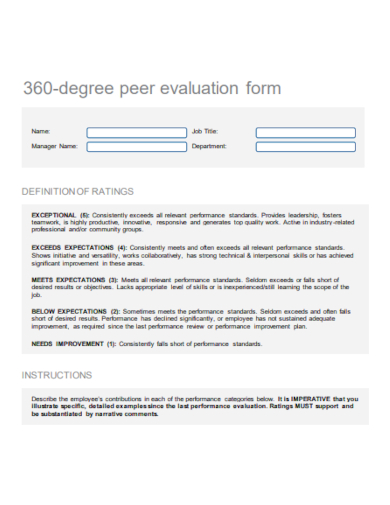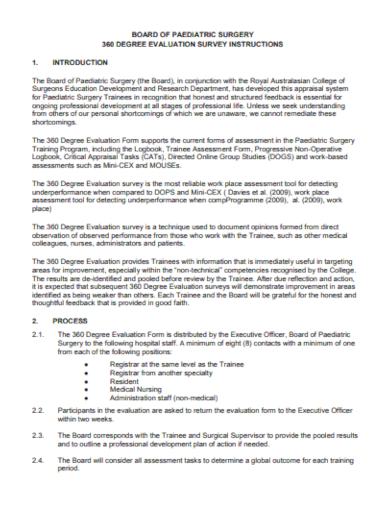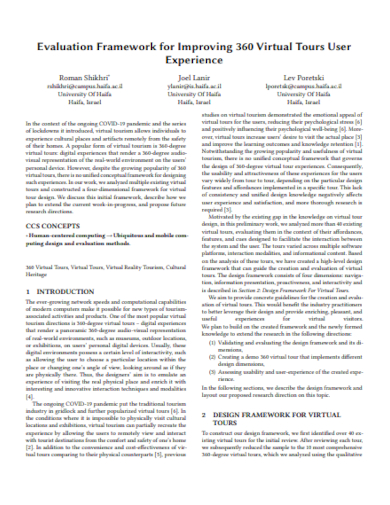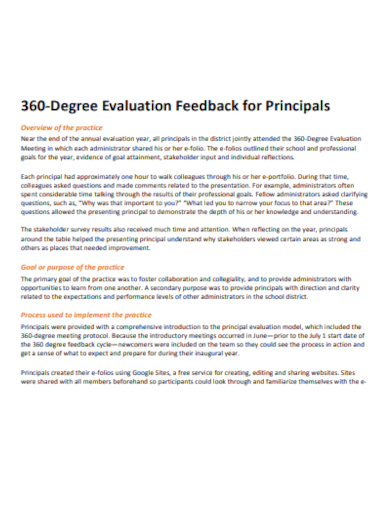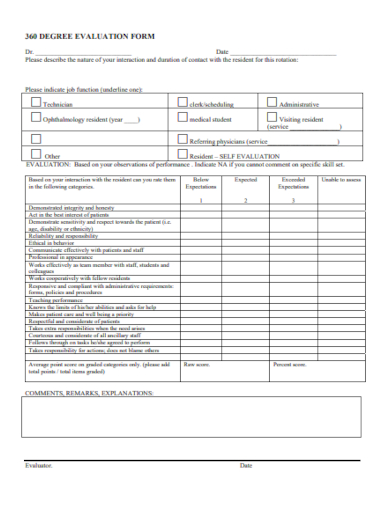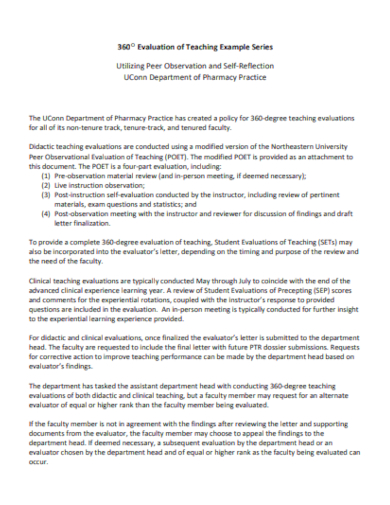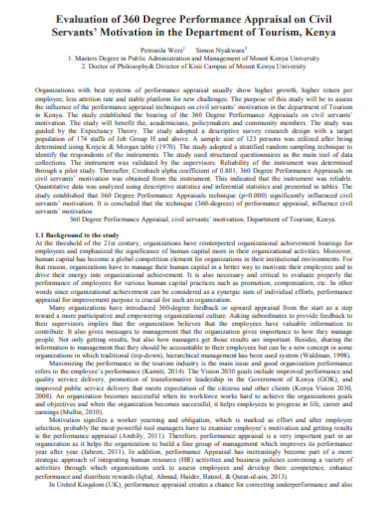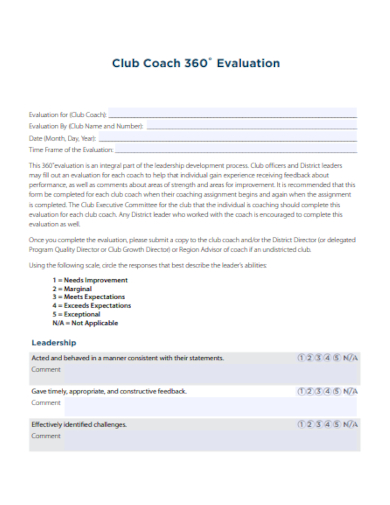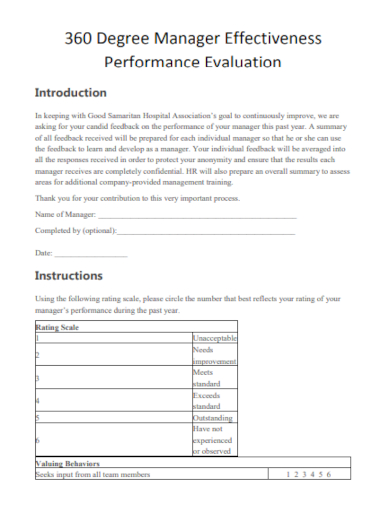An employee’s performance can be evaluated using a 360-degree feedback samples system to provide a holistic and all-encompassing perspective on that performance. It makes it possible for an employee to obtain feedback from a single general manager or supervisor and various sources, including peers, superiors, and subordinates. This can be especially helpful for employees who may have little engagement with their supervisors or who may not receive regular feedback on their performance because they may not receive it regularly.
10+ 360 Evaluation Samples
1. 360 Evaluation
2. 360 Degree Evaluation
3. 360 Degree Peer Evaluation
4. 360 Degree Evaluation Survey
5. 360 Evaluation Framework
6. 360 Evaluation Feedback for Principals
7. 360 Degree Evaluation Form
8. 360 Evaluation of Teaching
9. Evaluation of 360 Performance Appraisal
10. Club Coach 360 Degree Evaluation
11. 360 Degree Manager Performance Evaluation
What Is 360 Evaluation Sample?
A performance review procedure known as a 360 evaluation is one in which an employee’s work is reviewed not only by his or her peers but also by his or her superiors and subordinates. This type of review is known as a “360 evaluation” since it incorporates feedback from all 360 degrees of an employee’s working environment.
How To Make 360 Evaluation Sample?
A 360 evaluation can also be an effective tool for identifying areas of strength and weakness in an employee’s performance and areas where they may need additional training need or support. So, to get started with your evaluation sheet, you can start from scratch and read the steps below or avail other available pre-made templates found in this article.
Step 1- Determine The Scope
Determine the aspects of an employee’s performance you wish to emphasize and which people will be offering comments on their performance (peers, superiors, subordinates, etc.).
Step 2- Develop a Questionnaire
This can be accomplished by utilizing a mix of open-ended questions and ones that are more organized and quantitative. Be sure to ask various questions covering various topics, including general performance impact and particular behavior change.
Step 3- Identify the Evaluators
Find out who will be responsible for filling out the evaluation questionnaire, and then check that they know their part in the process and its overarching goal.
Step 4- Share the Results
Have a conversation with the employee about the review results, and together, identify any areas of strength and weakness. Collaborate with the employee to devise a sub plan for addressing any aspects of their performance that could use some work. Besides, you can check in with the employee periodically to see how they are progressing and make any necessary adjustments to the plan.
How do I ensure the confidentiality of the evaluations?
It is important to maintain the confidentiality of the evaluations to ensure that individuals feel comfortable providing honest and constructive feedback. One way to do this is to use a third-party vendor or software to collect and analyze the evaluations.
How do I handle conflicting feedback?
If you receive conflicting feedback from different sources, it can be helpful to look for common themes or areas of agreement. You can also consider seeking out additional input or clarification from the individuals who provided the conflicting feedback.
How do I handle negative feedback?
It is important to approach negative feedback with an open mind and a willingness to listen and learn. Consider the specific concerns or issues raised and see if there are any actions that can be taken to address them. It may also be helpful to discuss the negative feedback with the employee and see if there are any misunderstandings or alternative perspectives that can be taken into account.
In general, the goal of a 360-degree assessment is to assist individuals in improving their performance and making more significant contributions to the overall success of the organization in which they are employed. Because it encourages employees to provide and accept feedback from their colleagues, it can also help to increase communication and collaboration inside a business, which is another benefit of the practice.
Related Posts
FREE 10+ Clinical Evaluation Report Samples
FREE 10+ Summative Evaluation Form Samples
FREE 10+ Sample Orientation Evaluation Forms
FREE 9+ Sample Project Evaluation Forms
FREE 9+ Marketing Evaluation Form Samples
FREE 8+ Sample Job Evaluation Reports
FREE 7+ Teacher Evaluation Samples
FREE 7+ Sample Supplier Evaluations
FREE 6+ Supervisor Evaluation Samples
FREE Project Evaluation Objectives
FREE 11+ Sample Evaluation Reports
FREE 9+ Event Evaluation Samples
FREE 9+ Software Evaluation Samples
FREE 9+ Software Evaluation Samples
FREE 8+ Evaluation Report Templates

